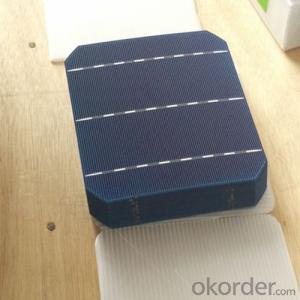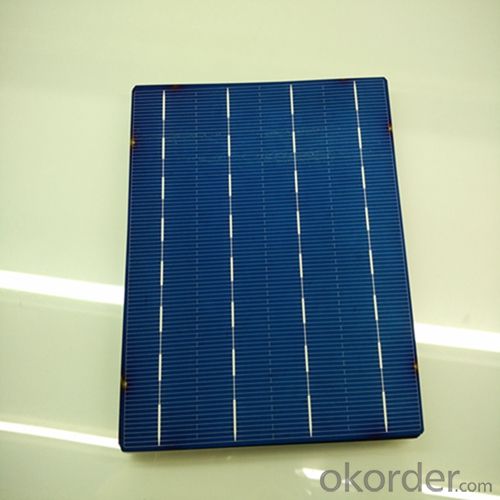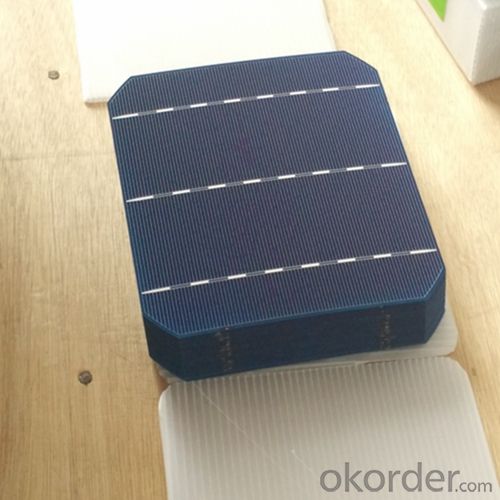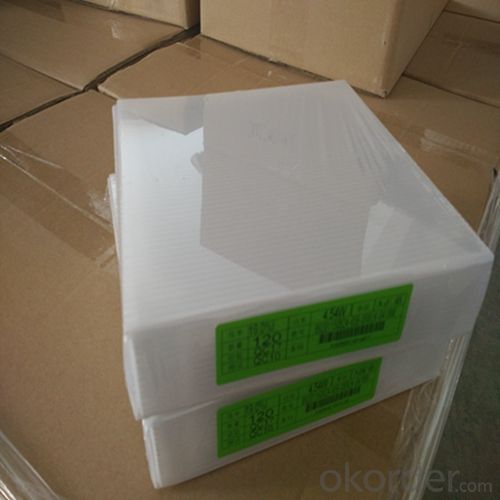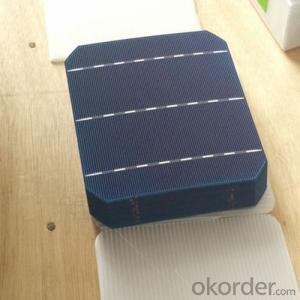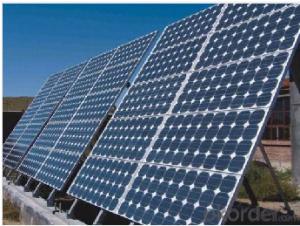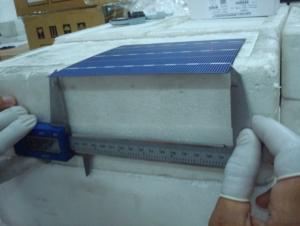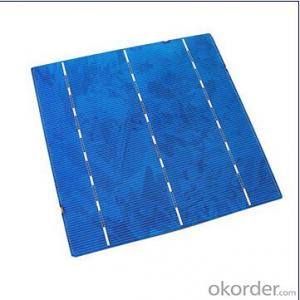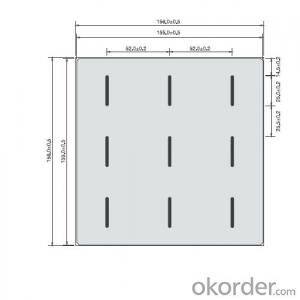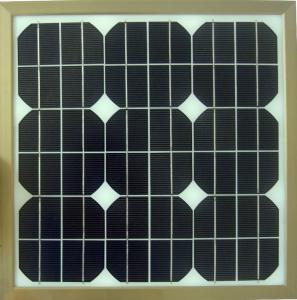Printed Organic Solar Cells - Poly 156x156mm2 Class A3 Solar Cells
- Loading Port:
- Shanghai
- Payment Terms:
- TT OR LC
- Min Order Qty:
- 6000 watt
- Supply Capability:
- 6000000 watt/month
OKorder Service Pledge
OKorder Financial Service
You Might Also Like
The operation of a photovoltaic (PV) cell requires 3 basic attributes:
The absorption of light, generating either electron-hole pairs or excitons.
The separation of charge carriers of opposite types.
The separate extraction of those carriers to an external circuit.
In contrast, a solar thermal collector supplies heat by absorbing sunlight, for the purpose of either direct heating or indirect electrical power generation from heat. A "photoelectrolytic cell" (photoelectrochemical cell), on the other hand, refers either to a type of photovoltaic cell (like that developed by Edmond Becquerel and modern dye-sensitized solar cells), or to a device that splits water directly into hydrogen and oxygen using only solar illumination.Characteristic of Mono 156X156MM2 Solar Cells
You are gaining energy independence - add battery backup power for even greater energy security
The cost of electricity is only going to rise – insure against that rising cost
Adaptive cells change their absorption/reflection characteristics depending to respond to environmental conditions. An adaptive material responds to the intensity and angle of incident light. At the part of the cell where the light is most intense, the cell surface changes from reflective to adaptive, allowing the light to penetrate the cell. The other parts of the cell remain reflective increasing the retention of the absorbed light within the cell.[67]
In 2014 a system that combined an adaptive surface with a glass substrate that redirect the absorbed to a light absorber on the edges of the sheet. The system also included an array of fixed lenses/mirrors to concentrate light onto the adaptive surface. As the day continues, the concentrated light moves along the surface of the cell. That surface switches from reflective to adaptive when the light is most concentrated and back to reflective after the light moves along
Mechanical data and design
Format | 156mm x 156mm±0.5mm |
Thickness | 210μm±40μm |
Front(-) | 1.5mm bus bar (silver),blue anti-reflection coating (silicon nitride) |
Back (+) | 2.5mm wide soldering pads (sliver) back surface field (aluminium) |
Temperature Coefficient of Cells
Voc. Temp.coef.%/K | -0.35% |
Isc. Temp.coef .%/K | +0.024%/K |
Pm.Temp.coef. %/K | -0.47%/K |
Electrical Characteristic
Effiency(%) | Pmpp(W) | Umpp(V) | Impp(A) | Uoc(V) | Isc(A) | FF(%) |
18.35 | 4.384 | 0.526 | 8.333 | 0.63 | 8.877 | 78.39% |
18.20 | 4.349 | 0.526 | 8.263 | 0.63 | 8.789 | 78.54% |
18.05 | 4.313 | 0.525 | 8.216 | 0.63 | 8.741 | 78.32% |
17.90 | 4.277 | 0.524 | 8.161 | 0.625 | 8.713 | 78.04% |
17.75 | 4.241 | 0.523 | 8.116 | 0.625 | 8.678 | 77.70% |
17.60 | 4.206 | 0.521 | 8.073 | 0.625 | 8.657 | 77.36% |
17.45 | 4.170 | 0.519 | 8.039 | 0.625 | 8.633 | 76.92% |
17.30 | 4.134 | 0.517 | 8.004 | 0.625 | 8.622 | 76.59% |
17.15 | 4.096 | 0.516 | 7.938 | 0.625 | 8.537 | 76.80% |
17.00 | 4.062 | 0.512 | 7.933 | 0.625 | 8.531 | 76.18% |
16.75 | 4.002 | 0.511 | 7.828 | 0.625 | 8.499 | 75.34% |
16.50 | 3.940 | 0.510 | 7.731 | 0.625 | 8.484 | 74.36% |
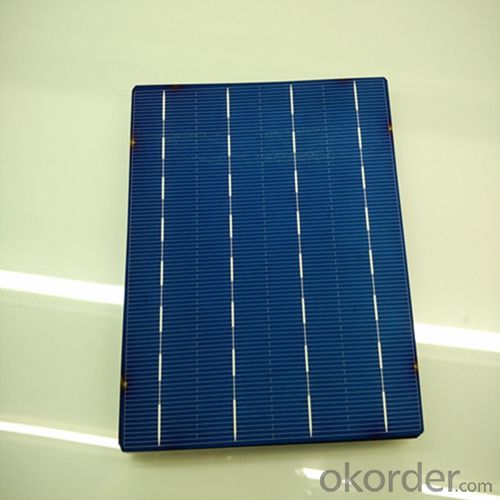
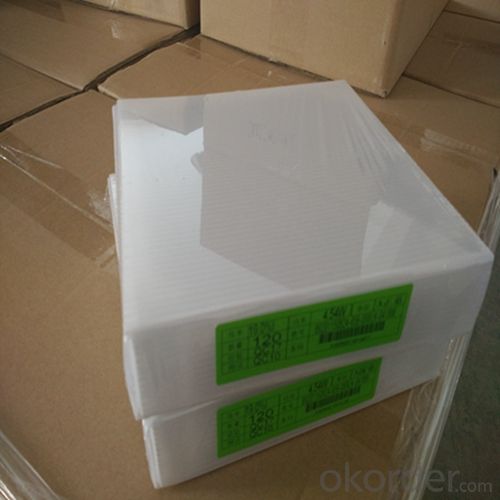
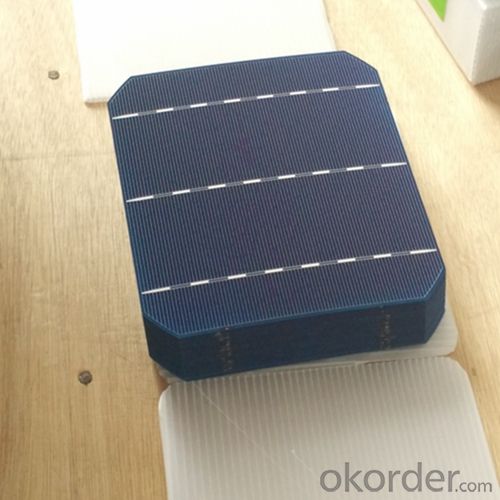

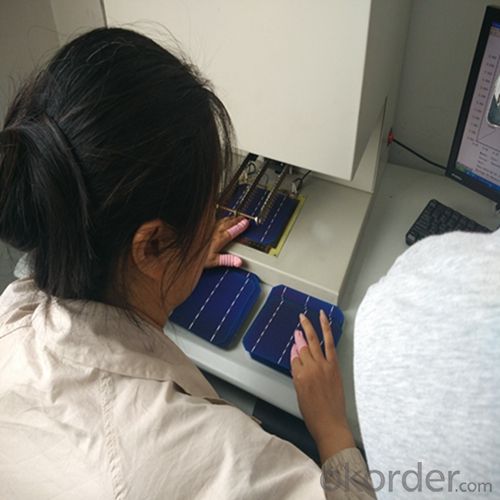 FAQ
FAQ
Q: What price for each watt?
A: It depends on the quantity, delivery date and payment terms, generally Large Quantity and Low Price
Q: What is your size for each module? Can you tell me the Parameter of your module?
A: We have different series of panels in different output, both c-Si and a-Si. Please take the specification sheet for your reference.
Q: What is your size for each module? Can you tell me the Parameter of your module?
A: We have different series of panels in different output, both c-Si and a-Si. Please take the specification sheet for your reference.
- Q: What is the maximum efficiency achievable by a solar cell?
- The maximum efficiency achievable by a solar cell is determined by the Shockley-Queisser limit, which states that the theoretical maximum efficiency is around 33.7%. However, in practice, most commercially available solar cells have efficiencies ranging between 15% to 22%.
- Q: What is the impact of electromagnetic interference on solar cell performance?
- Electromagnetic interference can have a significant impact on solar cell performance. It can disrupt the normal operation of solar cells by introducing unwanted electrical signals that interfere with the proper functioning of the cells. This interference can lead to decreased efficiency and power output of the solar panels, as well as potential damage to the cells themselves. Therefore, it is crucial to minimize electromagnetic interference to ensure optimal performance and longevity of solar cells.
- Q: How do solar cells affect the electricity grid?
- Solar cells can have both positive and negative impacts on the electricity grid. On one hand, they can contribute to a more sustainable and renewable energy mix by generating clean electricity directly from sunlight. This reduces the need for fossil fuel-based power generation, leading to a decrease in greenhouse gas emissions and air pollution. Solar cells can also help diversify the energy sources in the grid, making it more resilient and less dependent on imported energy. On the other hand, the intermittent nature of solar power can pose challenges to the stability and reliability of the electricity grid. Since solar cells only generate electricity when the sun is shining, their output fluctuates throughout the day and is absent during nighttime. This can create imbalances between electricity supply and demand, as the grid needs to ensure a constant and reliable power supply to consumers. Additional measures, such as energy storage systems or backup power sources, may be required to address these intermittency issues and maintain grid stability. Overall, the integration of solar cells into the electricity grid presents opportunities for cleaner energy generation and reduced reliance on fossil fuels, but it also necessitates careful planning and the implementation of appropriate grid management strategies to mitigate potential challenges.
- Q: Can solar cells be used in security systems?
- Yes, solar cells can be used in security systems. Solar-powered security systems utilize solar cells to convert sunlight into electricity, which is then stored in batteries for continuous power supply. This allows security systems to operate independently of the electrical grid, making them more reliable and cost-effective in remote or off-grid locations. Additionally, solar-powered security systems are environmentally friendly, reducing dependence on fossil fuels and lowering carbon emissions.
- Q: What are the disadvantages of using solar cells?
- One disadvantage of using solar cells is their high initial cost. The installation and purchasing of solar panels can be expensive for homeowners or businesses, making it less accessible for some people. Additionally, solar energy production is dependent on weather conditions, meaning that cloudy or rainy days can lead to reduced efficiency. Finally, the production of solar cells requires rare materials, such as silicon, which can have negative environmental impacts if not managed properly.
- Q: What is the impact of bird droppings on solar cell efficiency?
- Bird droppings can have a negative impact on solar cell efficiency as they can block sunlight from reaching the surface of the cells, reducing their ability to generate electricity. Additionally, the acidic nature of bird droppings can cause damage to the protective coatings on the solar cells, further decreasing their efficiency. Regular cleaning and maintenance are necessary to mitigate the effects of bird droppings on solar cell performance.
- Q: Can solar cells be recycled?
- Yes, solar cells can be recycled. The process involves separating and recovering valuable materials like silicon, silver, and aluminum from the cells. This not only reduces waste but also allows for the reuse of these materials in the production of new solar cells.
- Q: Can solar cells be used in sports arenas?
- Yes, solar cells can be used in sports arenas. They can be installed on the rooftops or canopies of the arenas to generate renewable energy. This not only helps in reducing the carbon footprint of the venue but also provides sustainable power for various operations within the arena, such as lighting, heating, and cooling systems. Additionally, solar cells can also be used to power electronic devices and scoreboards in sports arenas, making them more energy-efficient and environmentally friendly.
- Q: Can solar cells be used in extreme climates?
- Yes, solar cells can be used in extreme climates. While extreme temperatures and harsh weather conditions can affect their efficiency to some extent, solar cells are designed to withstand a wide range of climates. In fact, many solar installations are successfully operating in extreme environments such as deserts, polar regions, and high-altitude areas. Proper design, installation, and maintenance techniques can ensure their optimal performance and durability even in challenging climate conditions.
- Q: How do solar cells perform in regions with high levels of dust and sandstorms?
- Solar cells can be affected by high levels of dust and sandstorms in regions. The accumulation of dust particles on the surface of solar panels can reduce their efficiency by blocking sunlight and reducing the amount of energy they can generate. Regular cleaning and maintenance are crucial in these areas to ensure optimal performance of solar cells and to prevent any long-term damage caused by the accumulation of dust and sand.
Send your message to us
Printed Organic Solar Cells - Poly 156x156mm2 Class A3 Solar Cells
- Loading Port:
- Shanghai
- Payment Terms:
- TT OR LC
- Min Order Qty:
- 6000 watt
- Supply Capability:
- 6000000 watt/month
OKorder Service Pledge
OKorder Financial Service
Similar products
Hot products
Hot Searches
Related keywords


